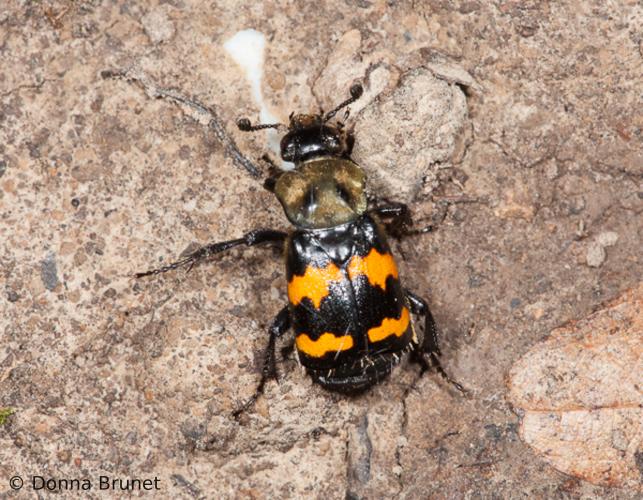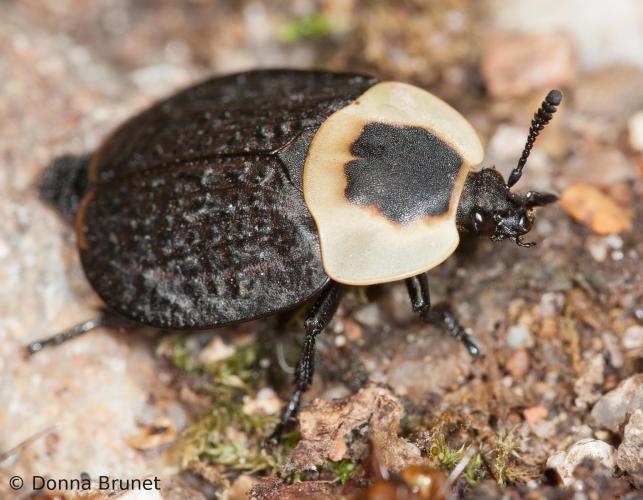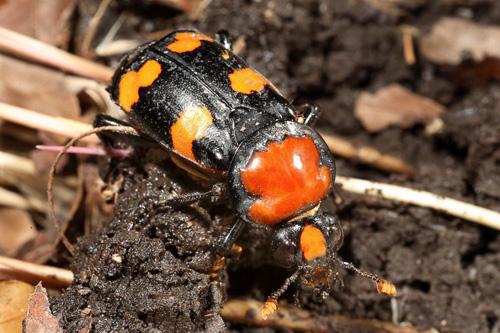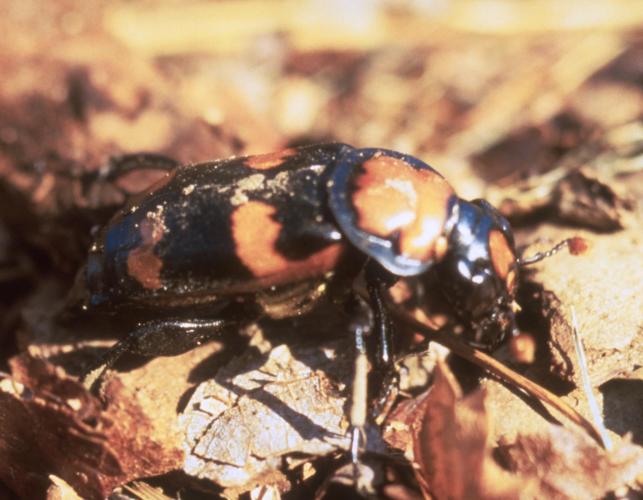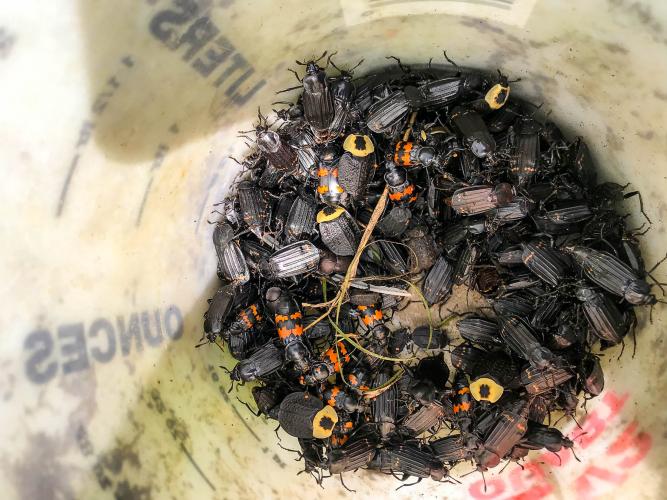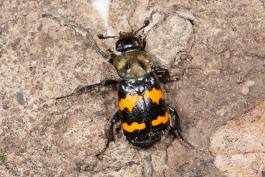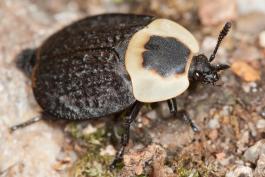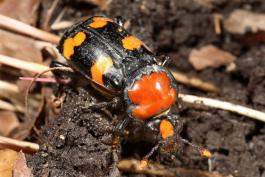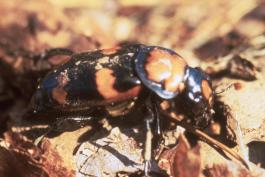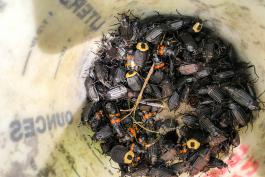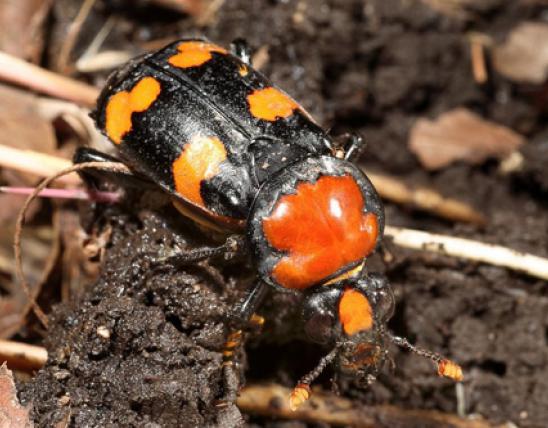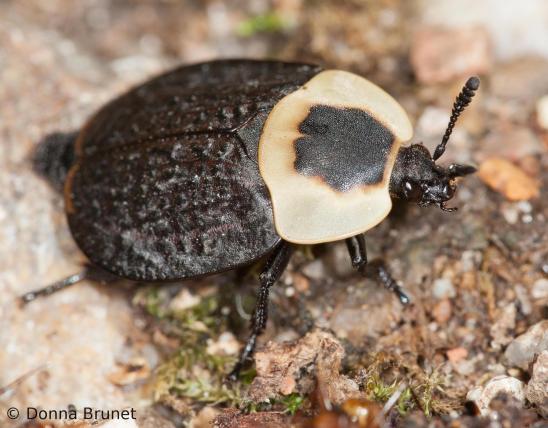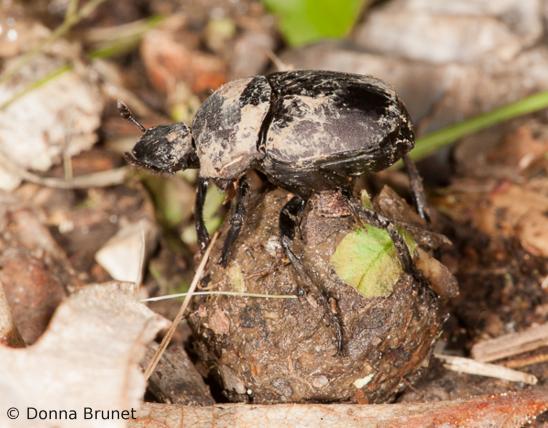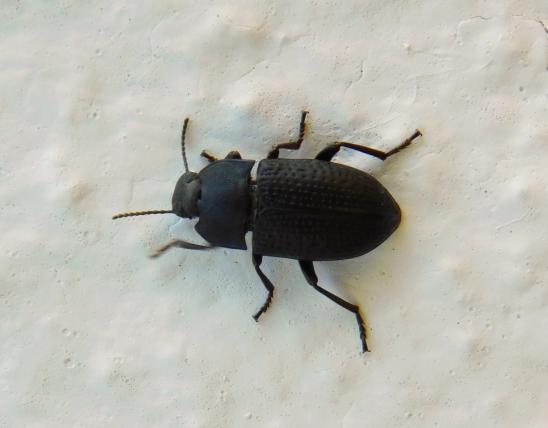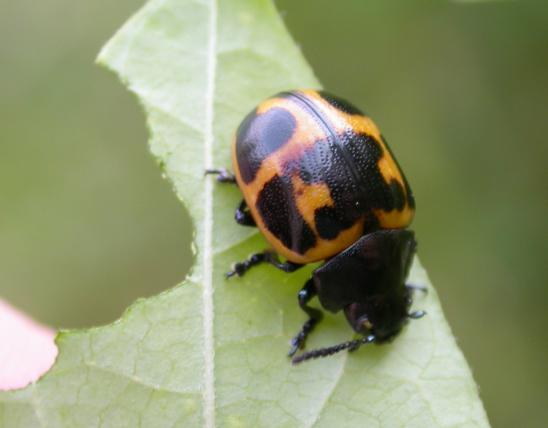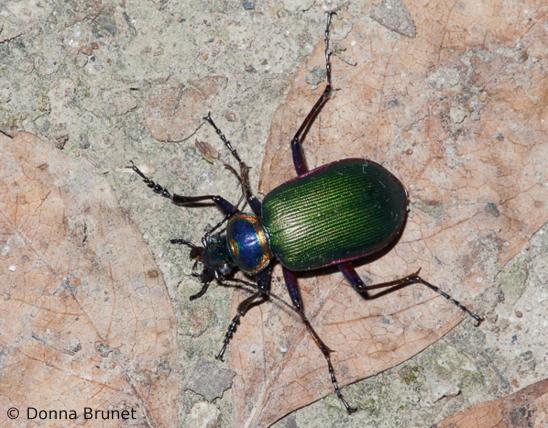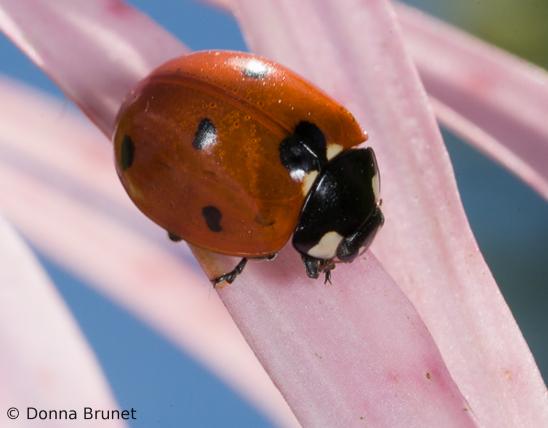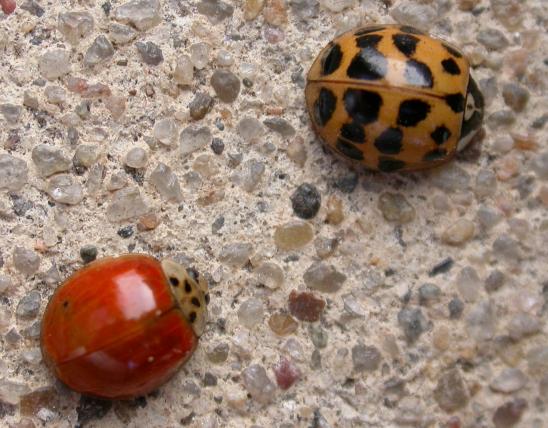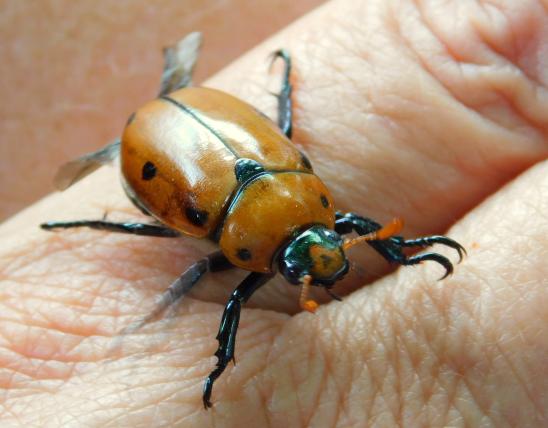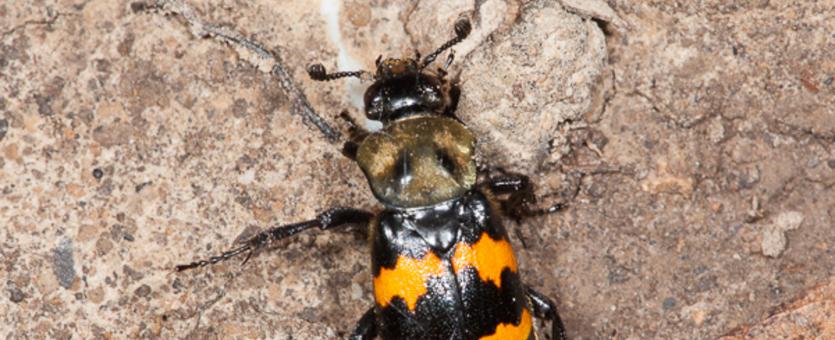
Several groups of beetles eat carrion. Those in the carrion beetle family are flattened, usually black, often with markings of red, orange, or yellow. The shell-like forewings (elytra) have a distinctive shape, wider toward the end of the body and narrower toward the front. In many species, the elytra are too short to cover the final 1 to 3 segments of the abdomen tip. The antennae are distinctively clubbed, often with minute hairs or colors at the very tip. These beetles often secrete or spray foul-smelling substances, or just plain smell bad themselves.
Like those of other beetles, the larvae are grubs. The colors and shape vary according to species.
There are about 30 species in the carrion beetle family in North America north of Mexico, some more common than others. One member of this group, the American burying beetle (Nicrophorus americanus), is a federally threatened and state endangered species. It is the subject of a multi-state captive-breeding and reintroduction effort.
Although some types of carrion beetles can be crop pests, most of them perform a vastly important service — transforming rotting corpses into the much less offensive form of their own bodies.
Adult length: ½-1½ inch (varies with species).

Statewide.
Habitat and Conservation
If you want to find carrion beetles, look for dead vertibrate animals. Different species are attracted to different types of animals (birds, mammals, and so on). Other species seek out dung, rotting fruit, and decaying plant matter. A few are fruit pests. Some species are nocturnal, others are more active in daytime. Many cannot fly. Others, in flight, seem like bumblebees. Some are attracted to lights at night.
Food
Members of this group eat dead animals or scavenge dung or decaying plant material. Adults and larvae often eat the same thing. The particular dining habits vary with species. Some simply eat the carcass. Others eat fly maggots that eat the carcass. Burying beetles (genus Nicrophorus) dig soil from beneath a fallen animal, causing the corpse eventually to sink beneath the dirt piling up around it. Then the burying beetles remove fur or feathers and prepare the meat for their larvae.
Status
Different species are more common than others. One species, the American burying beetle, is a federally threatened and state endangered species. Carrion beetles are harmless to humans.
Life Cycle
Adults smell rotting material and hurry to their food. They mate and lay eggs on the food source. The burying behavior is an adaptation for reducing competition for their youngsters; buried, the corpse is less likely to be found by flies, which would lay their eggs on it, too. The larvae of some species grow rapidly, in large part because the adults stay and feed the young. Carrion beetles often carry with them mites that parasitize fly maggots — another way they help their young compete for food.
Human Connections
When a dead person is found, forensic scientists analyze the age and life cycle stages of carrion beetles present and thus can determine an approximate time of death — which helps solve crimes.
Also, by competing with fly maggots, burying beetles help control the numbers of flies that annoy people.
The famous entomologist J. Henri Fabre wrote that carrion beetles make “a clearance of death on behalf of life.” When we overcome our revulsion, we, too, can appreciate these interesting little grave diggers. (By the way, if you're interested in insects, you have to check out Fabre.)
Ecosystem Connections
These are the grave-diggers of the insect world. When death comes to animals, this crew of little sextons gets to work transforming the organic nutrients of what would otherwise be a putrid mess into inoffensive, living tissue, and finally back into the soil.
They also help check fly populations.
Many carrion beetle species are bee or wasp mimics, sharing a black plus yellow, orange, or red color pattern, and a heavy, loud-buzzing flight. Seeming like a stinging insect may help them avoid predators.
